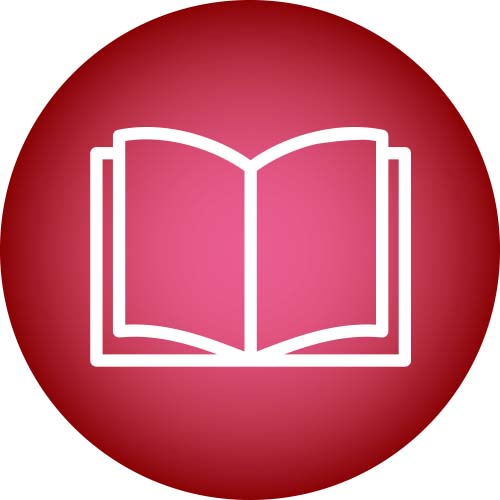In Its Stead

Korbanos are a reminder that our guf is meaningful only when used in the service of our seichel

Yearning for the Beis Hamikdash is a core aspect of authentic Judaism. We mourn its destruction for three consecutive weeks a year, invoke its absence at every wedding, and grieve its demise after festive meals. Allusions to our epic loss feature so prominently in the landscape of Jewish life, we may be forgiven for overlooking an obvious daily reminder of it: our tefillos.
“Rabi Yehoshua ben Levi teaches, [the Anshei Knesses Hagedolah] instituted tefillah in place of the Korban Tamid” (Berachos 26b).
It’s been two millennia since we’ve offered the last morning and afternoon Korban Tamid, and as many years of practicing formal tefillah — enough time to occasionally forget the correlation between the two. We strive for connection to Hashem through the words of Shemoneh Esreh and struggle for greater kavanah, forgetting that it’s actually a stand-in for the genuine article, the avodah in the Mikdash.
At first glance, Retzeh, the prelude to the final three brachos of Shemoneh Esreh, is highly redundant. In the previous brachah of Shema koleinu, we ask Hashem to heed our voice and accept our tefillos. Retzeh Hashem Elokeinu b’amcha Yisrael u’visfilasam, is an almost identical request.
A Replacement
Rav Uri Weissblum (He’aras Hatefillah) attributes the request of Shema koleinu to the previous 11 bakashos, Atah chonen through Es tzemach. There, we ask Hashem to answer the myriad appeals expressed in the previous brachos.
Retzeh addresses another request entirely. Here we reference the avodah of the Mikdash, and ask that Hashem accept our tefillos in their stead. Retzeh is the brachah of avodah, the thrice daily reminder that our tefillah is in place of korbanos.
“V’hasheiv es ha’avodah l’dvir beisecha.” Dvir, a derivation of the word dibbur, speech, is an allusion to the Kodesh Hakodoshim. There, in that holy space, Hashem spoke from above the kapores, between the Keruvim (Shemos 25:22).
“V’ishei Yisrael u’sefillasam b’ahavah sekabel b’ratzon, u’sehi l’ratzon tamid avodas Yisrael amecha.” Although we aren’t privileged to offer the ishei Yisrael, the korbanos, we ask that Hashem, in His immense love for Klal Yisrael, accept our tefillah as readily as if it were indeed a korban in the Mikdash.
The Role of Korbanos
Years ago, a teacher I worked with shared a question that had been asked by a potential baalas teshuvah: Why do we engage in animal sacrifice, an act that seems incompatible with both the rationality and compassion of Judaism?
From an anatomical perspective, animals and people are strikingly similar. Our physiological structure is so aligned, we use one as a biological prototype for the other, and even allow for experimental transplants in humans using animal organs and tissue.
What is the distinguishing factor between the two?
The Sefer Hachinuch (mitzvah 95) teaches that seichel — human intellect, logic and reasoning — is a feature we possess that animals lack. We’re a fusion of guf and seichel, lower body and lofty mind, but an animal is composed of guf alone; his essence is no more than crass physicality. Without seichel, an animal is enslaved to the demands of its guf. With the gift of seichel, man can choose to override the mandates of the guf and follow the calling of his higher self.
When offering a korban, we enter the Mikdash, an edifice wholly dedicated to the dictates of seichel, and proceed to burn an animal, whose guf is virtually identical to ours. This viscerally demonstrates the superiority of seichel over guf and imbues us with the awareness that guf without seichel is utterly worthless.
Korbanos are a reminder that our guf is meaningful only when used in the service of our seichel.
Rav Yehonasan Eybeschutz approaches the tefillah of Retzeh from the perspective of kiddush Hashem. He understands the allusion to korbanos as a call to sacrifice ourselves for avodas Hashem, al kiddush Hashem, as we would sacrifice a korban on the Mizbeiach.
Sacrificing oneself al kiddush Hashem is not a simple proposition and understandably most of us are reluctant to declare our readiness to sacrifice our life. However, there are other korbanos I can offer Him, by sacrificing those parts of myself that exemplify guf unrestricted by seichel. Unadulterated guf, whether in manners of improper speech, inappropriate thought, or unsuitable deed, are korbanos that are truly worthy of the Mizbeiach Hashem, modern day stand-ins for the ishei Yisrael of yore.
Meriting the Miracles
Retzeh, the commemoration of tefillah as our substitute for avodas haMikdash, concludes with the brachah of “v’sechezenah eineinu beshuv’cha l’Tzion b’rachamim,” a plea to perceive, with our own eyes, Hashem’s Shechinah return to Yerushalayim.
The ultimate Geulah will undoubtedly be accompanied by outstanding miracles. Who will merit seeing them? Will every person who lives to see the Geulah observe the miracles as well?
When Lot and his family were rushed out of Sedom, they were cautioned to refrain from peering backward to view the destruction of their city. Rashi explains that they were saved in Avraham Avinu’s merit, and thus were prohibited from viewing the miracle of Sedom’s demise. This explains why Lot’s wife turned into a pillar of salt when she defied this command, she was not worthy of seeing this miracle.
Miracles performed in our merit are miracles we can perceive. However, when a miracle is performed for us in the merit of another, we forfeit the privilege of perceiving it.
When we invoke “v’sechezenah eineinu,” our request is bilateral. We ask that Hashem return to Yerushalayim in our zechus, and therefore allow us the privilege of watching the dramatic miracles of the Geulah unfold before our very eyes, through “eineinu.”
Yet, ever cognizant that the period of Mashiach will be fraught with pain and adversity, we beg Hashem that the Geulah be tempered by rachamim, that mercy inform the period of Chevlei Mashiach.
The brachah concludes in the present tense, “Hamachazir shechinaso l’Tzion.” Once again, we are reminded that the Shechinah’s ultimate return is an evolving process that has been developing since the Beis Hamikdash was destroyed two millennia ago and continues to progress at this very moment.
Everything that transpires now before eineinu, our eyes, both the good and the bad, will ultimately be recognized as imperative to “shuv’cha l’Tzion b’rachamim,” His merciful return to Yerushalayim.
(Originally featured in Family First, Issue 900)
Oops! We could not locate your form.




